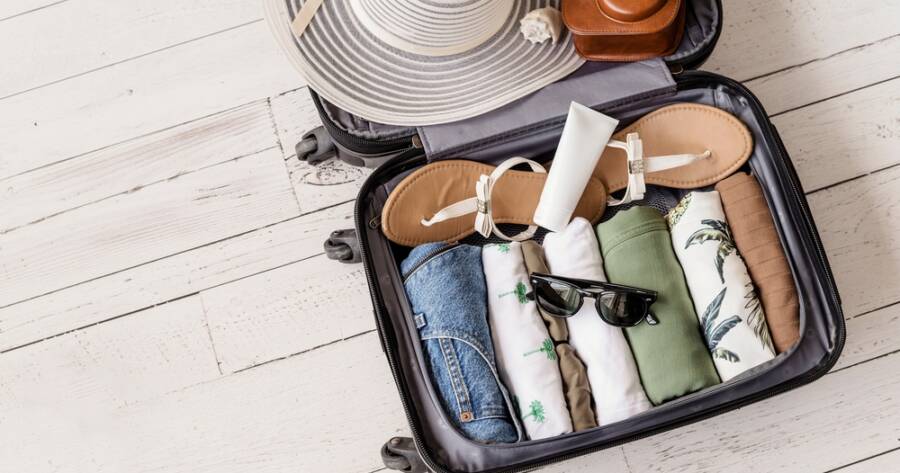Packing light for a long trip may seem impossible, but with the right strategy, one carry-on bag is all you need. Smart packing techniques help maximize space, keep essentials organized, and eliminate the hassle of bulky luggage. From choosing versatile clothing to utilizing space-saving hacks, a well-packed carry-on can simplify travel and reduce stress. Whether you’re off on an extended adventure or a work trip, mastering the art of minimalist packing will make every journey smoother.
Choose the Right Carry-On Bag
The foundation of efficient packing starts with selecting the perfect carry-on. Look for a lightweight, durable bag that meets airline size restrictions while maximizing space. A structured suitcase with compression capabilities or a travel backpack with multiple compartments can keep belongings organized. Opt for a design with sturdy zippers, easy-access pockets, and a comfortable carrying system to make long travel days easier.
Hard-shell suitcases protect fragile items, while soft-sided bags offer more flexibility for squeezing into overhead bins. If you prefer a backpack, ensure it has padded straps and a breathable back panel for comfort. Whichever style you choose, prioritize versatility, security features, and an efficient layout to keep everything accessible without digging through your belongings mid-trip.
Prioritize Versatile Clothing
Packing multi-functional clothing is the key to fitting everything into a single bag. Stick to neutral colors and wrinkle-resistant fabrics that can be mixed and matched to create multiple outfits. Choose lightweight, breathable materials for comfort, and layer-friendly pieces that can adapt to different climates. A capsule wardrobe of essential basics, like a few tops, bottoms, and a lightweight jacket, can take you from casual outings to more formal occasions.
Rolling clothes instead of folding them saves space and reduces wrinkles, while packing cubes help keep everything organized. Shoes should be limited to two or three pairs: a comfortable walking option, a versatile dressier pair, and lightweight sandals or sneakers. With the right combination of clothing, you’ll be prepared for any occasion without the extra bulk.
Master the Art of Packing Cubes
Packing cubes are game-changers when it comes to keeping a carry-on organized. These lightweight, zippered organizers help compartmentalize clothing, allowing you to maximize space while keeping items easy to find. Use different cubes for tops, bottoms, and undergarments to prevent everything from getting mixed up. Compression cubes are especially useful for squeezing bulky items like jackets or sweaters into a smaller space.
Beyond clothing, packing cubes can store accessories, toiletries, and tech gear, making them an essential tool for minimalist travel. A separate cube for laundry keeps worn clothes away from fresh ones, helping you stay organized throughout your trip. By using these space-saving tools, your bag remains neat, and you won’t have to rummage through everything to find what you need.
Streamline Toiletries with Travel-Sized Essentials
Toiletries can easily take up too much space, so downsizing is a must. Opt for travel-sized versions of your everyday essentials or invest in reusable silicone bottles to bring only the amount you need. A solid shampoo bar, toothpaste tablets, and multipurpose skincare products help reduce bulk while keeping your routine intact.
Instead of packing full-sized cosmetics and skincare, choose dual-purpose items like tinted moisturizer with SPF or a shampoo-conditioner combo. Most airlines have liquid restrictions, so sticking to a minimalist kit ensures you stay compliant while traveling light. Packing a small toiletry bag with just the necessities will keep your carry-on clutter-free while ensuring you have everything for a fresh, polished look on the go.
Use Smart Packing Hacks for Extra Space
Small packing tricks can make a big difference in fitting everything into one bag. Rolling clothes instead of folding them creates more space and prevents creases. Stuffing socks and accessories inside shoes keeps them from getting crushed while utilizing every inch of space. Wearing your bulkiest items—like a jacket or boots—on the plane frees up valuable room in your carry-on.
A lightweight, foldable daypack or tote bag can be stored inside your carry-on and used for daily excursions once you arrive. Compression bags help condense bulkier items, making it easier to fit sweaters or jackets in cooler climates. By maximizing every inch of your bag, you can pack efficiently without feeling like you’re sacrificing essentials.
Keep Electronics and Essentials Easily Accessible
Traveling with only a carry-on means keeping your most important items within easy reach. A well-organized personal item, like a small backpack or tote, should hold travel documents, electronics, and anything else you’ll need during transit. A compact organizer for cords, chargers, and adapters prevents tangled messes and makes it easy to access what you need.
Noise-canceling headphones, a lightweight e-reader, and a portable charger are smart additions for long flights or train rides. If you’re traveling internationally, a universal adapter is a must-have. Keeping these essentials separate from your main carry-on ensures you won’t have to dig through your bag every time you need a boarding pass, passport, or power cable.
Packing Light, Traveling Smarter
Mastering the art of carry-on travel means embracing efficiency without sacrificing comfort. With smart packing techniques, versatile clothing choices, and the right gear, you can simplify your journey while staying prepared for any adventure.
Traveling light reduces stress, saves time at the airport, and allows you to move freely from one destination to the next. With everything you need in one bag, your trip becomes about the experience—not the luggage.

